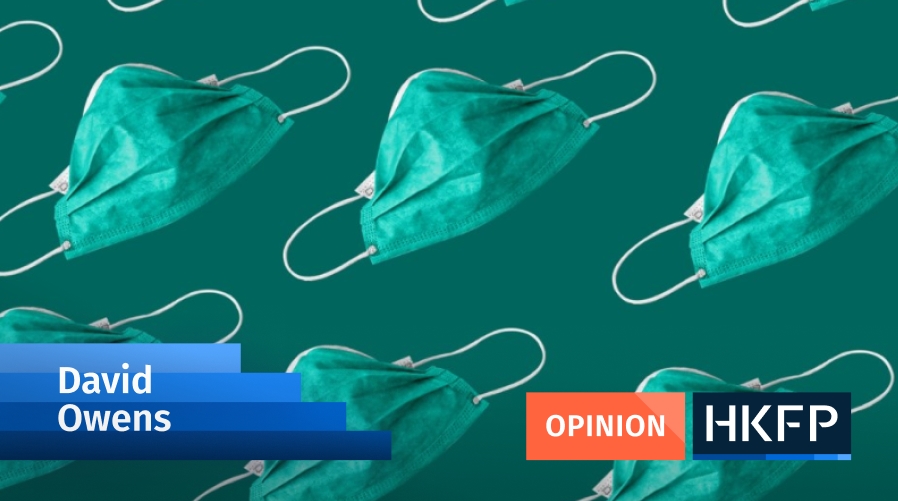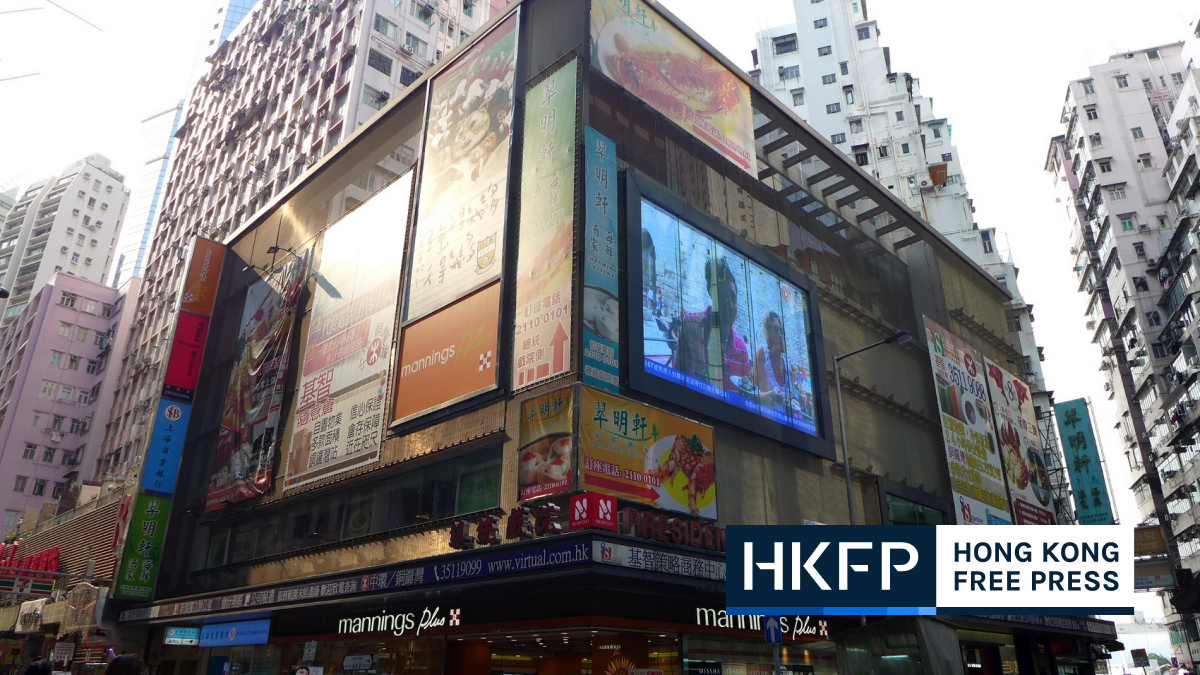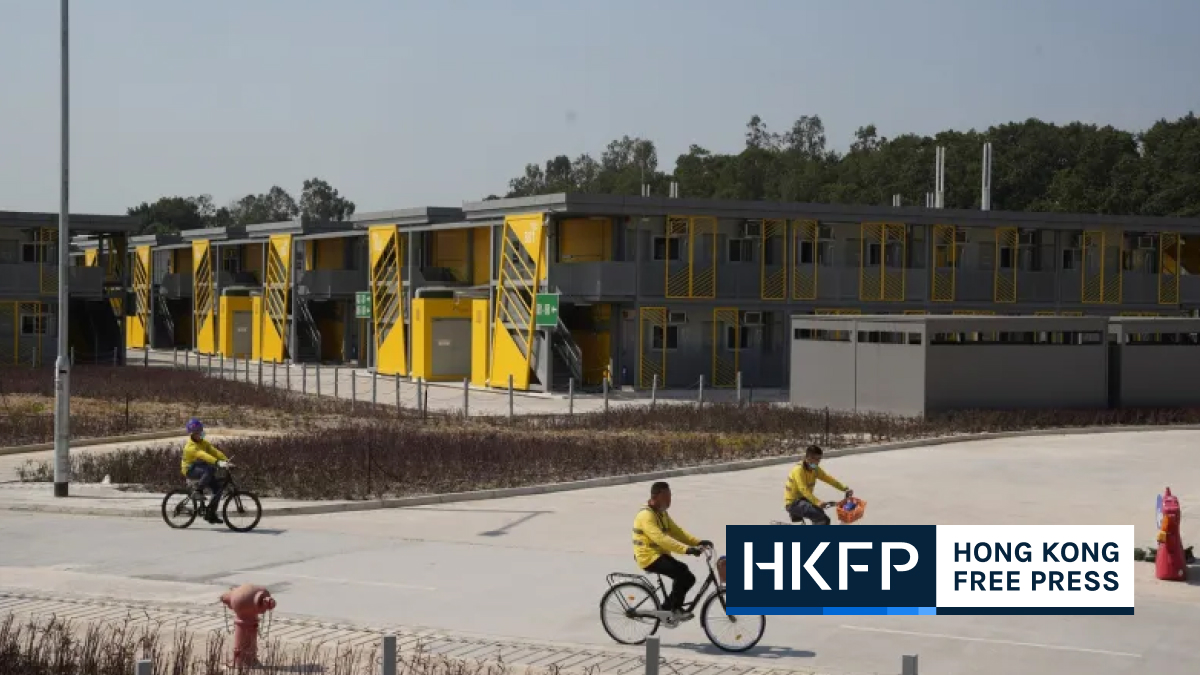On March 4, as Hong Kong’s fifth wave of Covid-19 was at its worst, Chief Secretary John Lee evoked an emergency regulation to build a temporary bridge connecting Lok Ma Chau Loop, the site of a soon-to-be-built makeshift hospital, to Shenzhen, across the border. Satellite images acquired by HKFP appear to show a bridge from mainland China to Hong Kong beginning to take shape some five days before it was announced.


With public hospitals already overwhelmed by growing numbers of Covid patients, the Hong Kong government announced on February 22 that it planned to build five makeshift community isolation and treatment facilities to ease the pressure on the health care system. Constructed from container cabins, these facilities would be similar to those seen in Wuhan during the early days of the pandemic. At Lok Ma Chau Loop, a site earmarked for an innovation and technology park would make way for a temporary hospital.
The 87-hectare riverside loop used to be Shenzhen territory. Located on the other side of Shenzhen River, which draws the boundary separating Hong Kong from the mainland, the loop was formally transferred to Hong Kong in 2017 after the river was straightened, which effectively redrew the border.

When Omicron hit, the Hong Kong government was in the process of turning the Lok Ma Chau Loop into a HK$60 billion technology park, to which Hong Kong and mainland biotech talents could easily commute. Development plans for the park showed authorities conceived a “long term possible link” with Shenzhen, “subject to further study,” where the temporary bridge now sits.
Last May, Secretary for Innovation and Technology Alfred Sit, which oversees the park’s development, also said there were plans to build a bridge for pedestrians and bicycles that would allow workers and residents in the park to commute easily between the two cities.

But for now, plans for the tech hub have been put on hold while the city seeks to add some 1,000 bed spaces in a hospital wing, as well as 10,000 beds in a community isolation facility, due to open in April.
Satellite images show construction of the bridge appear to have begun five days before Chief Secretary John Lee evoked the Covid-19 emergency regulation on March 4 to build a temporary bridge across the river.
“[T]o safeguard the lives and health of Hong Kong people, the project in the Lok Ma Chau Loop has to be completed as soon as practicable,” a government spokesperson said that day. “The works personnel of both sides agreed, after thorough discussions, that it is of utmost importance to the early completion of the project to build temporary bridges in the boundary area of the Lok Ma Chau Loop.”

The emergency exemption meant that construction personnel and building materials could move freely into the fenced-off construction site in the loop, the government said. There was no need to abide by existing laws related to customs, immigration, labour or construction safety.
Images captured by satellites show two objects appear in the river at the bridge’s current location on February 27. They were likely barges – flat-bottom boats to help with bridge construction, civil engineer Ngai Hok-yan, who reviewed the images, told HKFP.
On the same day the chief secretary’s announcement was made, photographs taken by mainland and local media showed an almost complete bridge. It was already connected to the mainland and stretched across the border drawn at the centre of the Shenzhen River, which is about 122 metres wide at that point. The bridge was metres away from being connected to Hong Kong’s territory, according to a photo taken by China Daily.
Judging from photographs of the bridge before its construction was complete, Ngai said the bridge appeared to be built with iron trusses, used steel pipes as its columns, and was laid with concrete. The bridge also appeared to use steel tube piles as foundation.
“If the trusses are pre-fabricated, then a bridge may only take two to three weeks to build,” he said. “The key is how long it would take to lay the foundation. [The time for] putting a bridge on top is not hard to control.”
“Until the bridge’s construction reached the centre of the river, in theory it was Shenzhen’s affair,” said Chan Kim-ching of Liber Research, a grassroots thinktank that studies Hong Kong land and development issues. “So they didn’t start working after the emergency law [was announced].”
Chan said when the Lok Ma Chau Loop development plans were made public a few years ago, the group noticed that there were indications for a new bridge to connect to Shenzhen. “Was this bridge going to be a new boundary crossing? What would be its permanent status? There was no clear explanation for that that the time.”

“Based on those development plans, the bridge is likely to remain permanently,” he said. “The [temporary] bridge would save [the government] a lot of work in explaining why they need a bridge in the future, but they should explain whether it will be a new border crossing and how it will be different from others.”
Ngai, the civil engineer, however said that the bridge was a temporary structure that could not be made permanent, as the latter would require different standards of construction. “Typically such construction techniques… can only be used under emergencies,” he said.
Construction for the makeshift hospital is ongoing. Thus far, there has been no indication as to when or whether the bridge will complete its mission, or if it will be demolished.
In response to HKFP’s enquiries on its plans for the temporary bridge, the Development Bureau said it had no comment to add other than the March 4 statement.
Support HKFP | Policies & Ethics | Error/typo? | Contact Us | Newsletter | Transparency & Annual Report | Apps
Help safeguard press freedom & keep HKFP free for all readers by supporting our team















